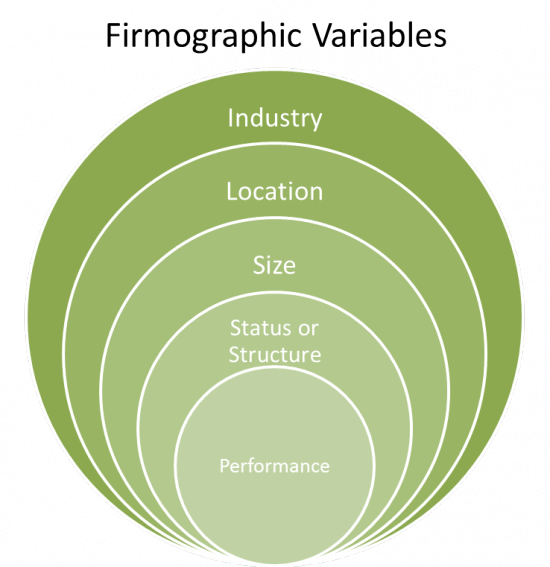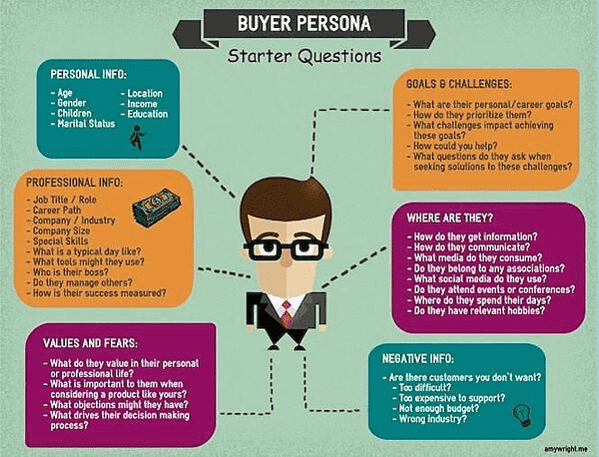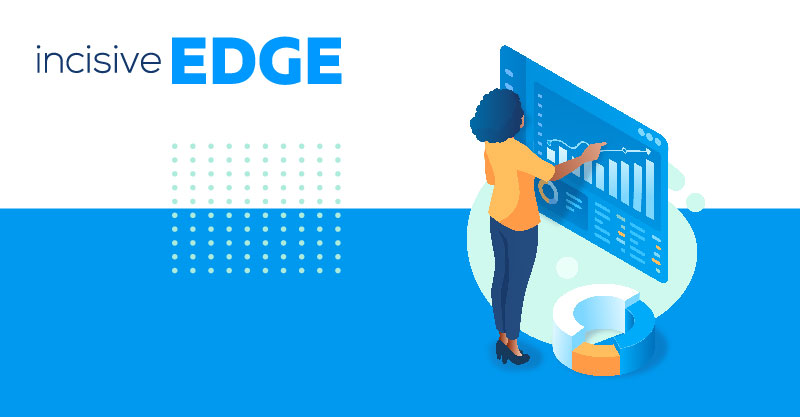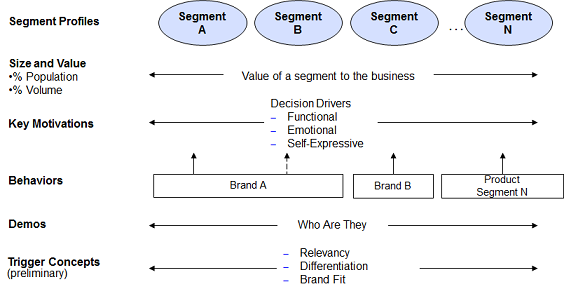When it comes to your marketing strategy, a one-size-fits-all approach isn't going to cut the mustard these days.
The more you can personalise your inbound marketing and account-based marketing efforts to specific customer segments within your target market, the more targeted and effective your marketing will be.
Remember, inbound marketing is about treating your audience like human beings, not a generic, faceless mass.
In an ideal world, content marketing would be able to target every potential customer individually – like the futuristic retina scan technology in the film ‘Minority Report' where adverts can identify every customer on sight and greet them by name and purchase history.
Okay, maybe that's a bit too much.
But the more you can speak to someone in a tailored way about their specific needs, the more likely they are to respond.
That's where building a segmentation framework can help, by dividing your audience into smaller segments of similar customers to make audience targeting easier to manage.
This blog will walk you through the ins and outs of a market segmentation framework. Whether you need it and its benefits.
What is Market Segmentation?
Segmentation is the marketing process of carving up (or ‘segmenting') people or prospects into groups that are likely to respond in similar ways to marketing communications.
Market segments should represent a group that is valuable, responsive to your digital marketing strategy and tactics in the same way, measurable, long-lasting and large enough to be profitable.
The characteristics we use to create target audience groups include:
- Demographic – such as age, location, income, race etc.
- Behavioural – information about past purchases or other actions
- Psychographic – areas such as lifestyle, values, beliefs and personality
- Firmographic – similar to demographic criteria, but as relates to B2B, such as business size, location, performance and so on.

Grouping customers and potential customers into these segments means that marketers can target particular strategies at those who are likely to respond along similar lines. Your market segmentation strategy is likely to not only increase brand loyalty by providing bespoke solutions but also increase your conversions.
For example, it's no use employing an email marketing campaign where you target SQLs (Sales Qualified Leads) with the same relatively straightforward educational content you are sending to your MQLs (Marketing Qualified Leads).
Rather, with different segments, your SQLs are already knowledgeable about your product and are ready to receive messages aimed at closing the sale.
Identifying where buyers are in the lead lifecycle is a fundamental part of your segmentation strategy that leads to success.
A successful business strategy must focus on every detail. The market segmentation framework is at the forefront of it. Not just in Digital marketing but in marketing as a whole.
Buyer Personas: As a Customer Data Marketing Strategy
A Buyer Persona is a semi-fictional outline of a business' ideal right audience.
Businesses may have multiple personas, representing the customer types they are serving.
Marketers must ask themselves various questions about these buyers to identify the most important traits of these different audiences and target markets.

(Image source: admedia.com)
It is the content marketing team's job to create content designed to resonate with each of these buyer personas, for where they are in their buying journey, with a view to slowly building lists of leads and customers, who share the same traits and nurturing them down the buying funnel.
Creating buyer personas and content lists is just the start, however.
You must refine your personas with more in-depth data on your customers that you will gather over time. The types of prospects you encounter will change as your content strategy rolls out, so your personas must also adapt.
To get a better understanding of your prospects and customers and how to engage them, a segmentation framework is needed.
Creating a Strategy Segmentation Framework
A segmentation framework works by collating segmentation characteristics of your audience and then further subdividing them according to where they are in the sales funnel.
First you segment prospects and customers into demographic/firmographic, psychographic and behavioural attributes. Then you create sub-segments for each stage of the lead lifecycle.
You can then apply inbound and account-based marketing methods to your segments and sub-segments, creating tailored content for each group and messaging each in a personalised fashion.
Rather than just sending everyone the same content that may have worked in the past, you're tailoring your marketing mix to specific groups who will hopefully respond in a predictable manner.
First though, to create valuable groups you must have a detailed understanding of the customers in your market segment.
The best way to collect the relevant information on these groups is your CRM (Customer Relationship Management) system.
A CRM collects and stores data on all your contacts.
HubSpot for example, provides powerful reporting on every individual who engages with you and enables you to segment them according to whichever characteristics you choose.
Say you want to list every contact who downloads your guide into an MQL segment. As a prospect consumes your content, HubSpot will record the interaction and can automatically assign them into the MQL group.
By automatically gathering information on the contact, it can tell you which market segmentation he or she fits into.
And you can use HubSpot to further refine these segments into firmographic or behavioural sub-groups to provide hyper-targeted content. Take for instance two leads who download the guide and become part of your MQL segment - one who works for a tech startup and the other in manufacturing.
With your segmentation framework set up into sub-segments by industry, you can automate your software to offer the first content on, say, growing a startup, and the other an eBook on digital marketing in manufacturing.
 (Image source: hubspot.com)
(Image source: hubspot.com)
Segmentation and Lead Nurturing
So, one of the biggest advantages of segmentation is the power it is has to nurture your leads.
Getting personalised messages to the right, different audiences at the right time, should be the aim of your marketing team.
With your CRM automating the segmentation process as contacts progress through the buyer's journey, you free up your team's time to write that brilliant content and begin to refine the segmentation process.
This is a crucial point – buyer personas and audiences are rarely stationary.
Messaging can and should be regularly updated according to the new data your target audiences are providing, as they interact with your business.
Instead of basing your framework on your initial assumptions, your audience will start to tell you what their behaviours, values and needs are. Providing you a deeper understanding of their buyer persona.
You should adapt your segmentation framework accordingly, with the aim of identifying and allocating resources to your most valuable groups.
But remember it's not just existing target customers who should all part of your segmentation framework.
Prospects coming into the top of your funnel and leads in the middle, are just as important as post-sale contacts. All groups should have a place in your customer acquisition framework to be converted, nurtured, re-sold to and even rescued if the data shows they're at risk of being lost.
Over to You
Get started now by identifying your prospective customers and audience characteristics to build an effective segmentation framework.
The more you can personalise your interactions, the more relevant your messaging and therefore the more efficient your use of market research becomes.
Applying alternative marketing strategies that do not take market segmentation as a focal point might hinder you from getting the most out of your marketing efforts.
Look at the behaviour, needs and values of your audience. Create segments and sub-segments.
Develop your groups and repeat the process continually to refine your segmentation framework.
For help getting your segmentation strategy underway why not get in touch with Incisive Edge.










